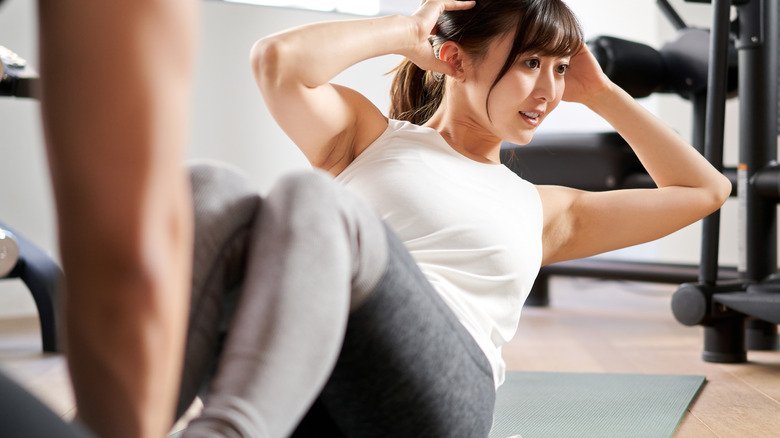Pushups Versus Sit-Ups: Which One Is Better For You?
Pushups and sit-ups are both dynamic exercises that target specific muscle groups. Both exercises can help work your core and engage other areas like your back and upper body. Unlike pushups, however, sit-ups are less effective and more likely to result in injury (via Business Insider). "I'm not a huge fan of sit-ups," declared Tony Maloney, a trainer and exercise physiologist at the National Institute for Fitness and Sport in Indianapolis. "Reason being, it can cause some spinal problems, especially if they're not done properly."
According to Harvard Health, sit-ups can be very hard on your back and spine, which can potentially cause damage to the area. That's because sit-ups can push your spine against the floor and engage your hip flexor muscles, which run from your thighs to your lower back region. If your hip flexor muscles are either too tight or too strong, they can end up tugging on your spine, causing lower back pain.
Benefits of pushups
Pushups, on the other hand, are a great way to work multiple muscle groups at once without putting added pressure on your back and spine. As a compound exercise and full body workout, pushups can help tone and strengthen your chest, triceps, biceps, shoulders, and upper back region (via Mindbodygreen). This can help increase your upper body strength, making it easier for you to lift and carry heavier items.
Pushups can also help improve your core strength and stability. This includes your rectus abdominis and other abdominal muscles in your midsection, like your transverse abdominis and multifidus muscles, which support and run along your spine. By targeting these muscles, you can help improve your posture and both strengthen and stabilize your core, which is essential when you're performing other exercises like running.
While pushups are usually considered a bodyweight exercise, you can turn them into a cardio workout by performing them at a faster pace and completing at least 10 sets in a row. This can help get your heart pumping and lower your risk of cardiovascular disease.

